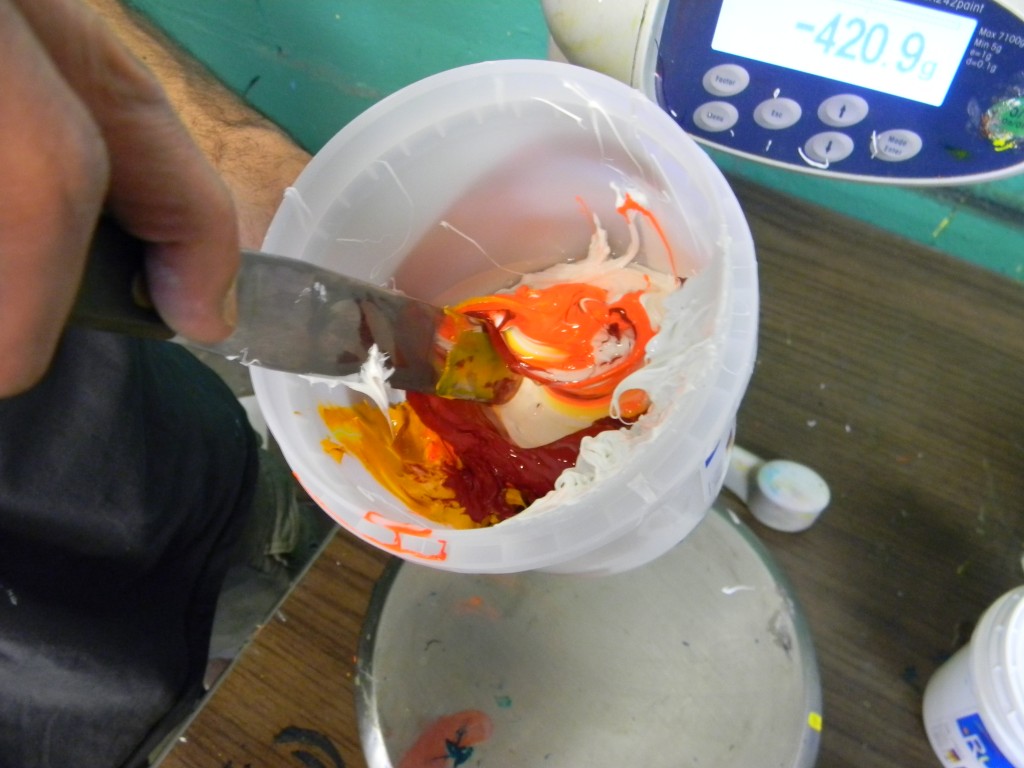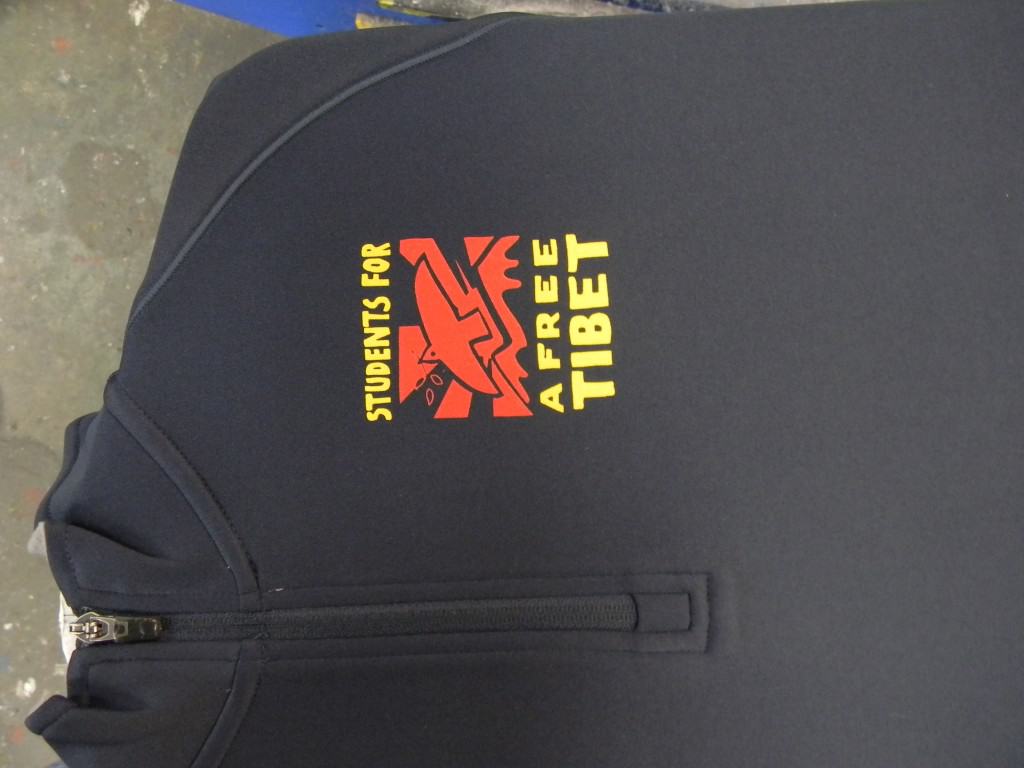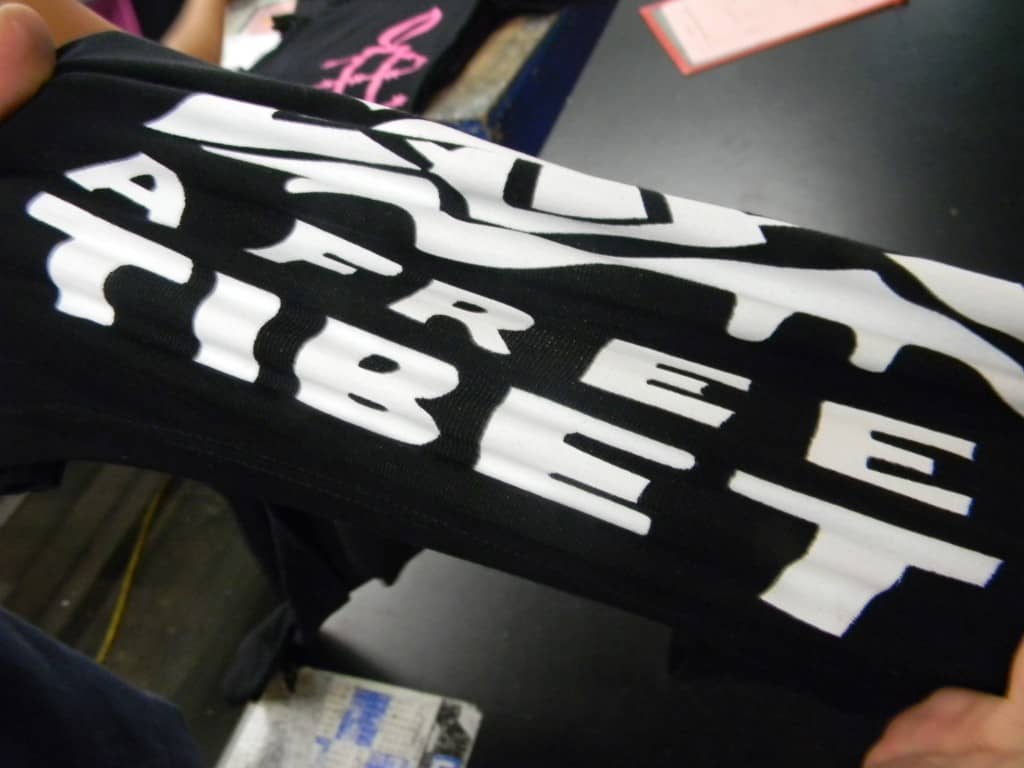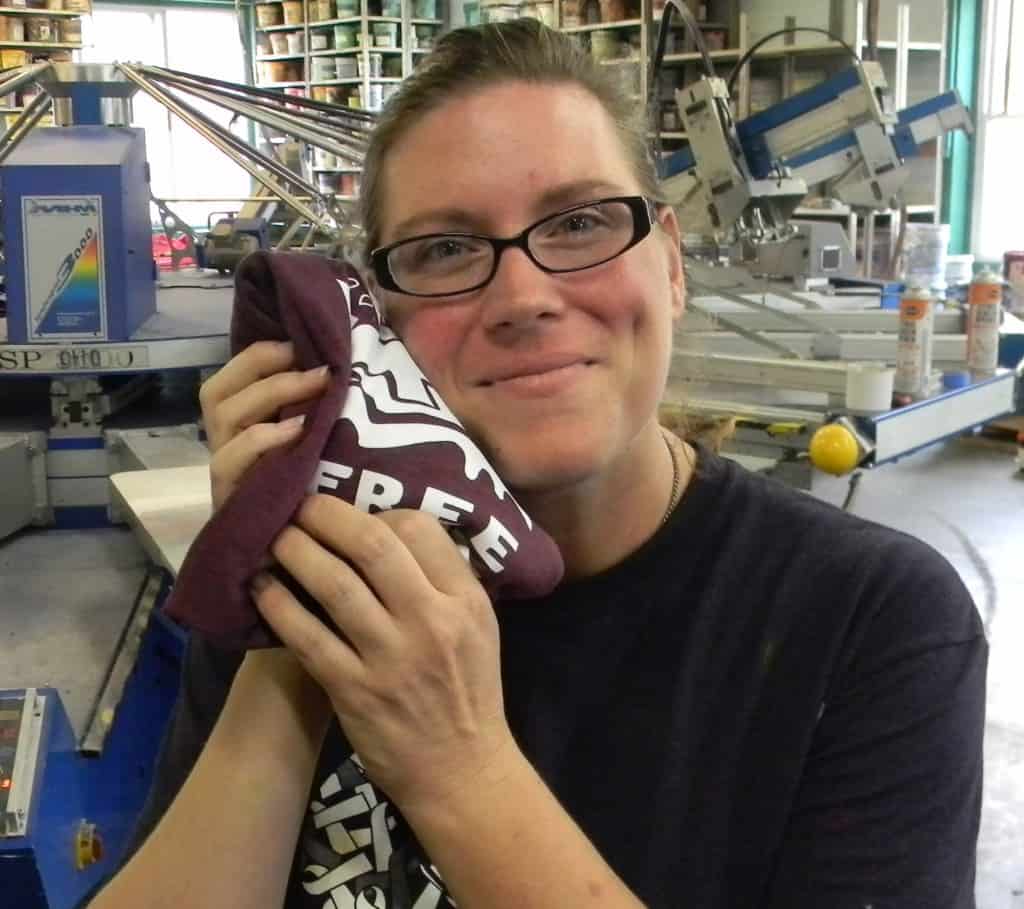The previous two posts were about how to test for dye migration, the scourge of screenprinters everywhere. There is a quick test using a heat press and some plasticizer, and then a medium length test of putting a printed shirt on your dryer, and then there is the real world test of letting the shirt sit around for a week or two or three.
So you find that the shirt has a little or big dye migration problem and what do you do?
Unfortunately in today’s printing world, you need to have numerous solutions, there is not just one that will work on all garments in all situations. Every day for the next week I’ll talk about a different solution. I can’t stress enough that none of these solutions will work in all situations, and that they all have positive and negative aspects.
Silicone ink is one such solution. I am basing my lists on Rutland silicone inks though from talking to other printers, I think most silicone products are at least similar.
Postives:
– Great prevention of dye migration on many substrated, in particular when caused by sublimation dyes such as digital camo
– It actually will not re-melt, so garments printed with silicone can be ironed.
– PVC free, if that is something you are looking for…
– Incredible elasticity for garments that stretch such those containing lycra and spandex
– Bright colors
– Relatively soft, particularly compared to plastisol barrier grey ink
– When not catalyzed, long shelf life
– While costly, not nearly as costly as mis-printing a stretchy dye migrating one hundred dollar jacket…
– Cures at lower temperatures, when catalyzed will even cure at room temperature when you have dried it to the touch
Negatives:
– Very expensive
– Requires a catalyst, and after catalyzing only has a pot life of four to six hours
– Very difficult to print and it prints differently than plastisol in terms of flow and shear
– Cannot be printed wet on wet, so you need a very big press and lots of flash cure units, or you need to keep your printing simple
– It flashes slowly
– Not compatible with other ink systems, so you can’t print silicone as an underprint and print plastisol on top for example






Comments